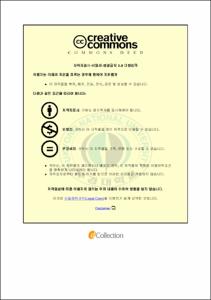Al-5083 합금에 대한 Plasma-GMA 용접 공정변수의 특성 평가 및 최적화에 관한 연구
- Alternative Title
- A Study of the Weldability Evaluation and Optimization of Process Variables in Plasma-GMA Welding for Al-5083 Alloy
- Abstract
- In order to reduce pollution of the marine environment and energy, aluminum ships is increase. In particular, FRP ships have been replaced by the aluminum ships. Aluminium alloy has high strength, low density, high corrosion resistance property at low temperature. In particular, Al 5083 alloy is mainly used high-speed ships and LNG tank.
In this paper, butt welding(6mm) type I using Plasma-GMA welding was carried out. And we were to evaluate Plasma-GMA hybrid welding characteristics of the Al 5083 aluminium alloy. The orthogonal experimental design was used to study the influence of plasma-GMA welding parameters. In order to evaluate factors(Plasma current, wire feeding rate, GMA welding voltage and welding speed) that effect bead geometry, we conducted ANOVA. Then we conducted evaluation of contribution for process parameters. Experimental results show that four bead dimensions(Bead width, Reinforcement height, Penetration Depth, Back bead width) in the Plasma-GMA welding process for a I-groove joint are affected by wire feeding speed, welding voltage and welding speed.
Three regression models and neural network model to estimate tensile strength was proposed. Estimation performance was evaluated through the coefficient of determination and average error rate and it was found that neural network model had the most excellent performance.
Optimal process variables were searched to maximize the fitness function which was defined with respect to tensile strength and GMA welding current which represented the weldablilty and welding speed which represented the productivity. As the optimization methodology, genetic algorithm were used and optimal welding condition, which meant plasma welding current, GMA welding voltage, wire feed rate, welding speed, was obtained for Plasma-GMA welding parameters.
- Issued Date
- 2014
- Awarded Date
- 2014. 2
- Type
- Dissertation
- Publisher
- 부경대학교
- Alternative Author(s)
- Jung, Jin Soo
- Affiliation
- 대학원
- Department
- 대학원 기계공학과
- Advisor
- 박영환
- Table Of Contents
- 제 1 장 서 론
1.1 연구배경 및 목적
1.2 연구현황
1.2.1 Plasma-GMA 하이브리드 용접
1.2.2 공정 모델링 및 최적화
1.3 연구 내용
제 2 장 이론적 배경
2.1 플라즈마 아크 용접
2.1.1 플라즈마 용접 장비
2.1.2 플라즈마 용접 방식
2.1.3 플라즈마 용접의 주요 공정변수
2.2 가스 메탈 아크 용접
2.2.1 용융금속의 이행현상
2.2.2 가스 메탈 아크 용접의 주요 공정변수
제 3 장 실험 및 결과
3.1 실험장치 및 조건
3.1.1 실험장치 및 재료
3.1.2 실험 조건
3.2 실험 결과
3.2.1 용적이행 모드의 분류
3.2.2 용접부 외관 및 비드형상
3.2.3 용접 단면부에 따른 분산분석
3.3.4 인장강도
제 4 장 공정변수를 이용한 인장강도 예측 모델
4.1 회귀분석을 이용한 인장강도 예측 모델
4.1.1 회귀 모델
4.1.2 회귀 모델의 통계적 유의성
4.2 인고지능 알고리즘을 이용한 인장강도 예측 모델
4.2.1 신경회로망 모델
4.2.2 신경회로망 모델의 통계적 유의성
4.3 각 모델의 예측성능 비교
제 5 장 유전알고리즘을 이용한 공정변수의 최적화
5.1 유전 알고리즘
5.2 목적 함수와 적합도 함수
5.3 유전 알고리즘의 파라미터
5.4 공정변수의 최적화 과정
6. 결론
Reference
Abstract
감사의 글
- Degree
- Master
- Files in This Item:
-
-
Download
 Al-5083 합금에 대한 Plasma-GMA 용접 공정변수의 특성 평가 및 최적화에 관한 연구.pdf
기타 데이터 / 8.02 MB / Adobe PDF
Al-5083 합금에 대한 Plasma-GMA 용접 공정변수의 특성 평가 및 최적화에 관한 연구.pdf
기타 데이터 / 8.02 MB / Adobe PDF
-
Items in Repository are protected by copyright, with all rights reserved, unless otherwise indicated.